“Urban villages” at Bi-city biennale of urbanism / architecture | Šnipiškės Šenženyje urbanistikos ir architektūros bienalėje
Autorius: Julius Narkūnas
Laimikis Urban games and research Lab is taking part in Bi-City Biennale on Urbanism / Architecture in Shenzhen / Hong Kong that opened in the end of December 2017. This time the topic of the Biennale is “Cities Grow in Difference”, and one of the fields is “Urban Villages”. This concept explores the diversity of lifestyles and architecture in the contemporary cities. By the invitation of the curatorial team we present an exhibition “Urban Patchwork“, devoted to the urban contrasts and rich textures of the historic neighbourhood of Šnipiškės, Vilnius. A series of exhibited works were created in cooperation with local residents and invited designer. It was the first time Lithuania took part in the Bi-city Biennale that is presented as the biggest Biennale on Urbanism and Architecture. Hereby we overview the urban context and some of the works presented at the Biennale. The main venue of the Biennale was located in Nantou, the ancient city, which has become a part of Shenzhen due to the rapid growth and urbanization. While preserving its historical charm and structure, the situation of Nantou is very close to the historical neighbourhood of Šnipiškės that we have been working at, launching tools for inclusive development, since 2012. The Biennale will last till the mid of March. Our participation in this Biennale was possible because of the great support from Lithuanian Culture Attache in China and South Korea and some help from Vilnius Municipality.
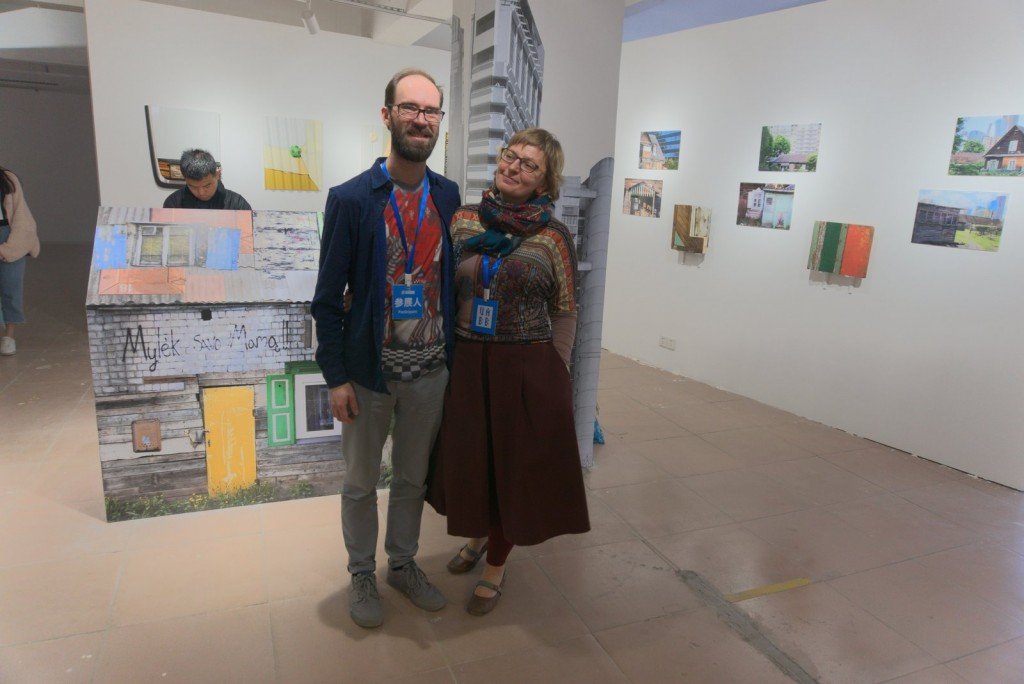
Gruodį toli rytuose, Kinijoje, septintojoje Šenženo-Honkongo architektūros ir urbanizmo bienalėje pristatėme Šnipiškėms skirtą ekspoziciją, kurią pavadinome “Urbanistinis koliažas” (Urban Patchwork). Lietuva šioje stambiausia vadinama urbanizmo ir architektūros bienalėje, kuri vyksta Šenžene ir Honkonge, dalyvauja pirmą kartą. Kuratorių kvietimu (Kinijos arch.biuras “Urbanus”, sukūręs ambicingą istorinio kaimo giavinimo ir išsaugojimo projektą) Bienalėje pristatėme seriją meno darbų (nuotraukos, koliažai, interaktyvi instaliacija), atskleidžiančių šiam Vilniaus rajonui būdingų unikalių, nykstančių faktūrų sąskambius ir urbanistinio audinio daugiasluoksniškumą. Koliažams sukurti pakvietėme dailininką Vytautą Stakutį, su kuriuo bendradarbiavome vystydami atviros meno galerijos iniciatyvą Šnipiškių garažų teritorijoje. Koliažams buvo panaudoti pačių gyventojų surinkti nykstančio rajono fragmentai. Siekdami atskleisti Šnipiškių unikalumą, mes pasitelkėme paralelę tarp miesto ir nuolatos taisomo audinio. Apie tai – atskirame įraše. Čia apžvelgsime bienalę, jos idėją ir jos kontekstą.

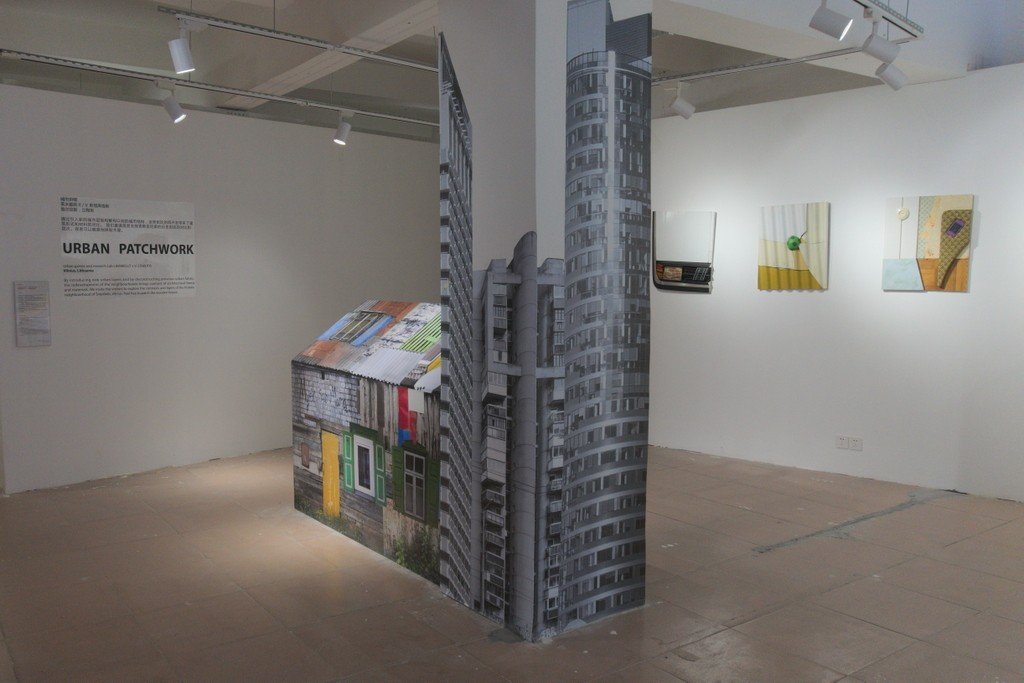

Bienalės tema – “Cities grow in difference” kvietė urbanizmo ir meno atstovus savo darbais ir idėjomis pristatyti savo perspektyvą į augančius miestus ir juose išliekačius istorijos fragmentus. Kuratoriai aiškiai pasisako už tai, kad įvairovė miestuose sutekia jam išskirtinumo ir augina jo vertę. Rengėjų teigimu, tai pirmoji bienalė, kuri savo temai iškomunikuoti pasirinko taip tankiai apgyvendintą teritoriją, kuri planavimo sprendimais buvo pritaikyta bienalės poreikiams. Savo ruožtu, Bienalė buvo sumanyta kaip įrankis atkreipti dėmesį į nedidelę istorinę vietovę ir jos situaciją Šenženo mieste, o taip pat parinkti jai palankiausią vystymo scenarijų.

Bienalės vieta – Nantou
Atvykome į Nantou – mažą kaimo burbulą vidury Šenženo. Ne jo geografiniame viduryje ir ne judriausiame rajone, o tame visą parą knibždančiame megapolio vandenyne. Senasis Nantou – tai oazė, į kurią galima pabėgti nuo daugiaaukštės statybos ir didelių atstumų.
Prieš 1700 metų Nantou buvo svarbų strateginį vaidmenį turėjęs miestas, kurio administracijai priklausė mažesni žvejų kaimeliai, išsibarstę palei Perlų upės žiotis. Nantou valdė dabartinio Honkongo, Guangdong‘o teritorijas. Tik aštuntajame dešimtmetyje, kai Honkongas ir Kinija užmezgė prekybinius santykius, atsirado Šenženas ir kaip miestas tiesiog sprogo, ištisi aukštų daugiabučių kvartalai laukė savo naujakurių, atvykusių čia iš visų Kinijos kampų. Augdamas jis absorbavo visus mažus kaimus ir iš senojo Nantou liko tik devynių gatvių tinklas (Nan Tou – kin. devynios gatvės), pietiniai miesto vartai ir vienas kitas senovinis namas. Rengdami Šnipiškėms skirtą parodos erdvę bienalėje kasdien judėjome tomis pačiomis gatvėmis ir stebėjome, kaip per kelias dienas prieš mūsų akis kaimelis tampa didžiule vieno stambaus renginio parodų erdve.

Čia susirinko virš 200 dalyvių iš 25 šalių. Tarp kurių garsiai nuskambėję, žinomi ir jau apdovanojimų iš įvairių pasaulio meno renginių susirinkę darbai. Pasak kuratorių, ši bienalė išsiskyrė iš ankstesnių savo meniškumu. Buvo kalbama, kad iš architetūros ir urbanizmo, ji tapo meno ir urbanizmo bienale.
Kaimo sienos sulaukė žymių gatvės menininkų kontekstualių darbų, kuriuos jie kūrė kelias savaites, apžaisdami vietinio gyvenimo motyvus. Iš Madrido atvykę Boa Mitsura paliko du darbus. Vienas – per visą pastatą užrašytas hieroglifas reiškiantis pusiausvyrą. Kitas – ne toks didelis bet detalaus piešinio darbas reiškiantis “pietūs” (kryptis, o ne laikas valgyti).
Italas Giacomo Bufarini (tikrai esate matę jo, prisidengusio psiaudonimu RUN darytus milžiniškus darbus) Nantou nutapė porą autorinių sienų ir vieną bendrą su kitu italu Nico (hitnes), kuris irgi ištapė vieno namo sienas įvairiais kaimo gyvenimo epizidais ir tipiškais kinų simboliais. Čia neapsieita be kuriozų, kai vienas iš “ne pagal feng-šui” nutapytas kampas papiktino visą miestelį. Žmonės kreipėsi į kuratorius, jie pasikalbėjo su Nico ir nesusipratimas buvo išspręstas drakonus pakeitus gaidžiais.
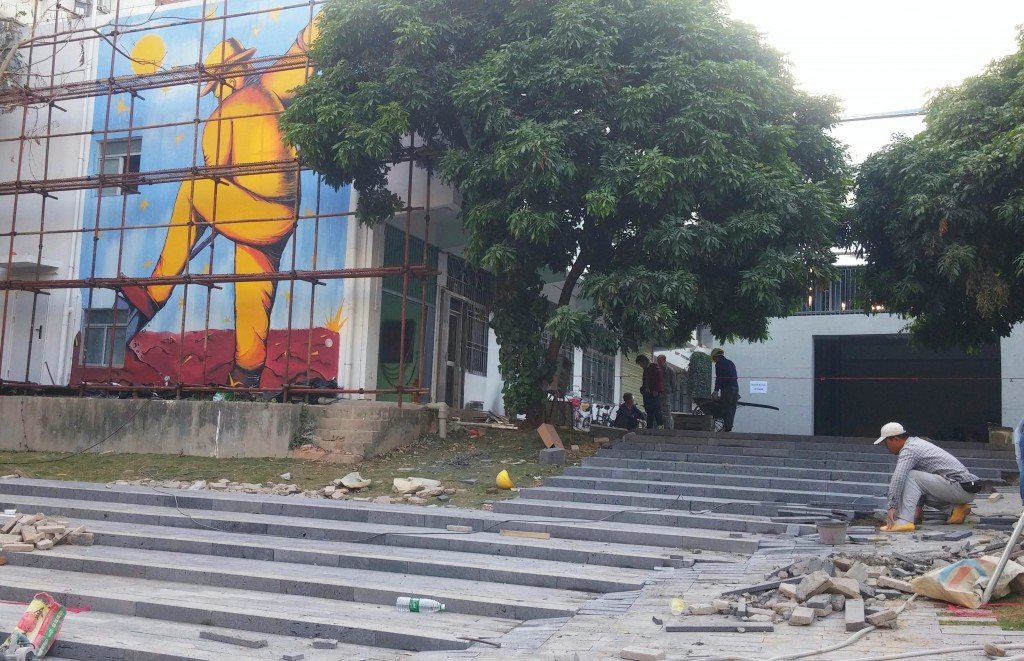
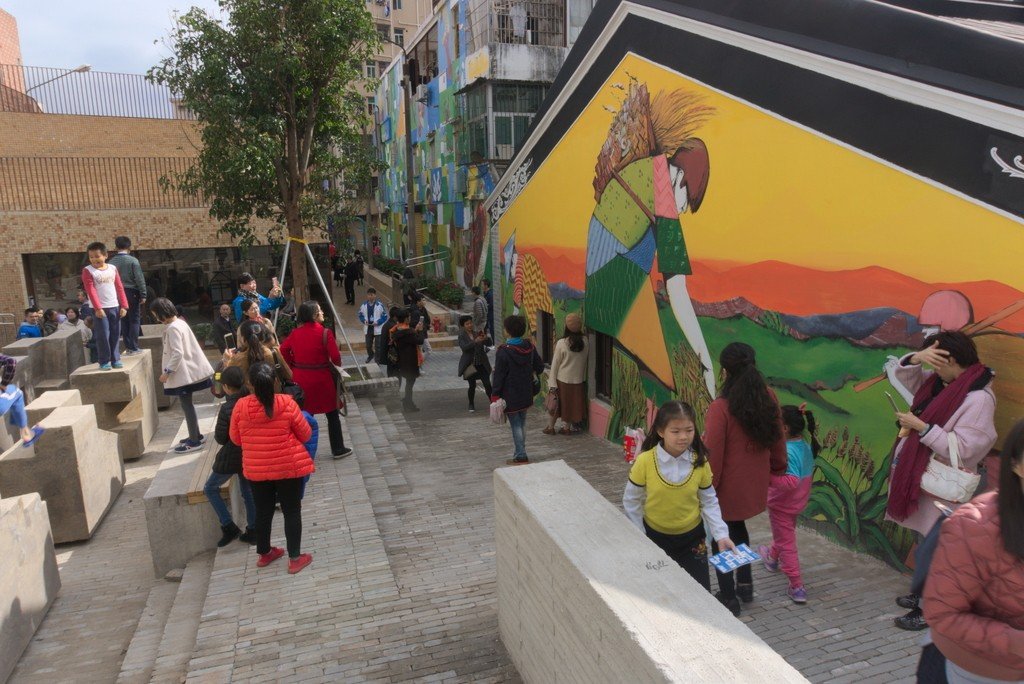
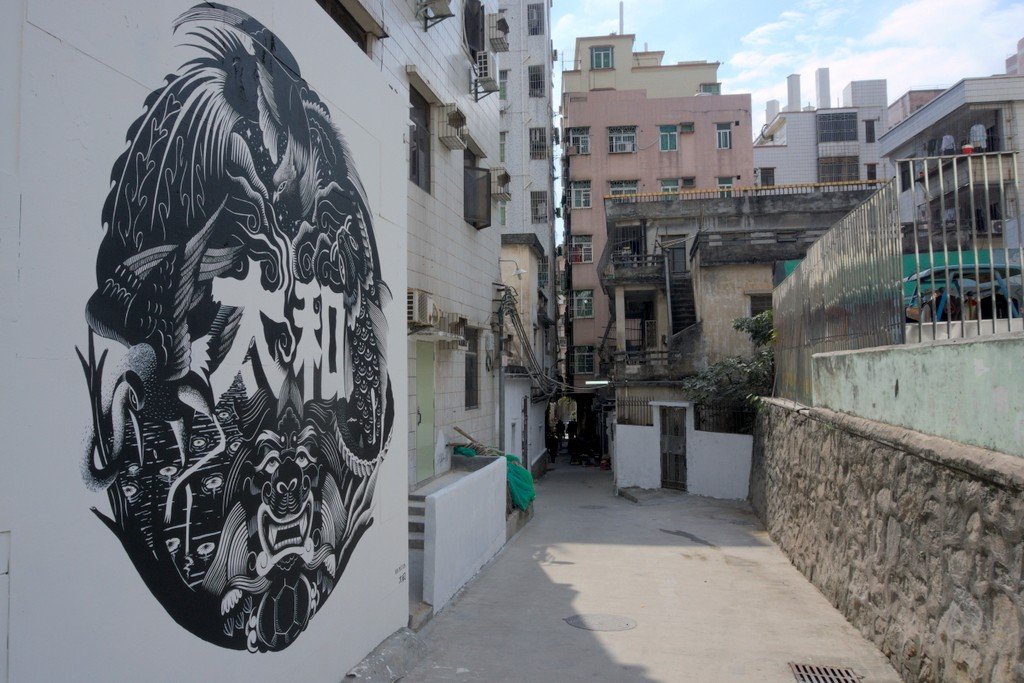
Olandų architektų biuro MVRDV kartu su Why Factory sukurti instaliacija (W)eGo. Aš asmeniškai esu didelis japonų biuro atelier Bow Wow mokėjimo savo pastatu užmegzti poetišką ryšį su aplinka. Šiai bienalei jie projektavo stogelį, kurio konstrukcija atrodė lyg prieš tai čia buvusios gamyklos cecho dalis. Konstrukcija primenanti ore pakabintus skardinius kaminus stovėjo ant rožinių metalinio karkaso kojų su lyg 4 aukštų pastatu, storais lynais nuleistas iki pirmo aukšto.

O po šiuo stogeliu galima prisėsti ir užkąsti. Tačiau svarbiausiu bienalės dalyviu pristatomas 94 metų amžiaus Yona Friedman – urbanizmo teoretikas ir architektas, sukūręs futuristinį miesto modelį. Jis skaitė paskaitą ir prastatė čia performansą. Taip jau nutinka su klasikais – senatvėje jie laiką skiria momentų architektūrai, kurią įgyvendina lengvų objektų ir balerinų pagalba, o ne tai griozdiškai ir nepaslankiai architektūros medžiagai.



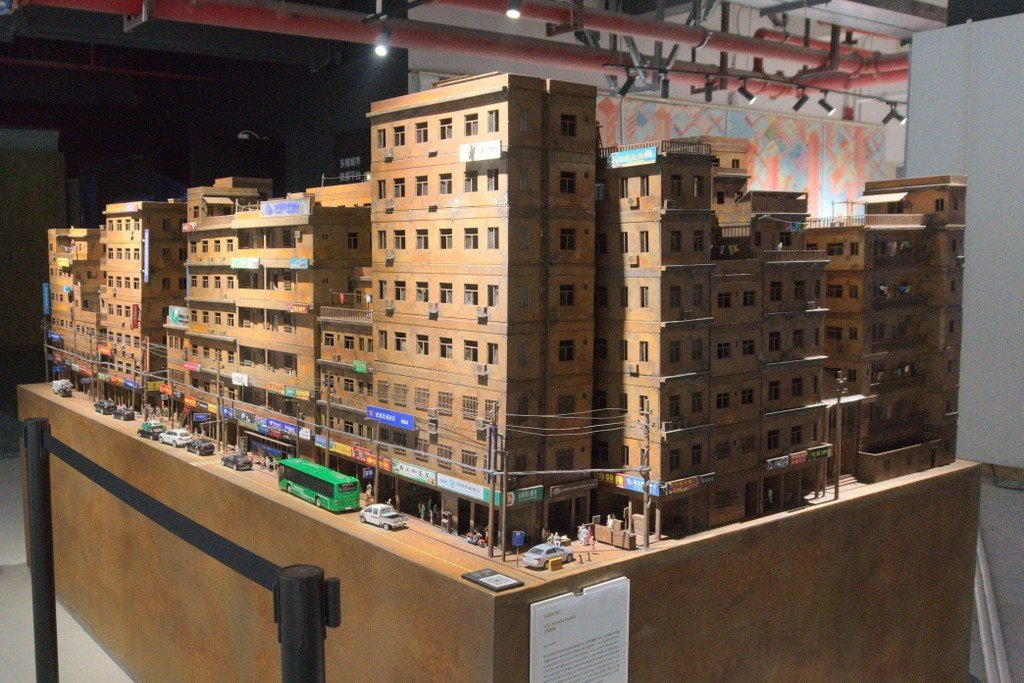


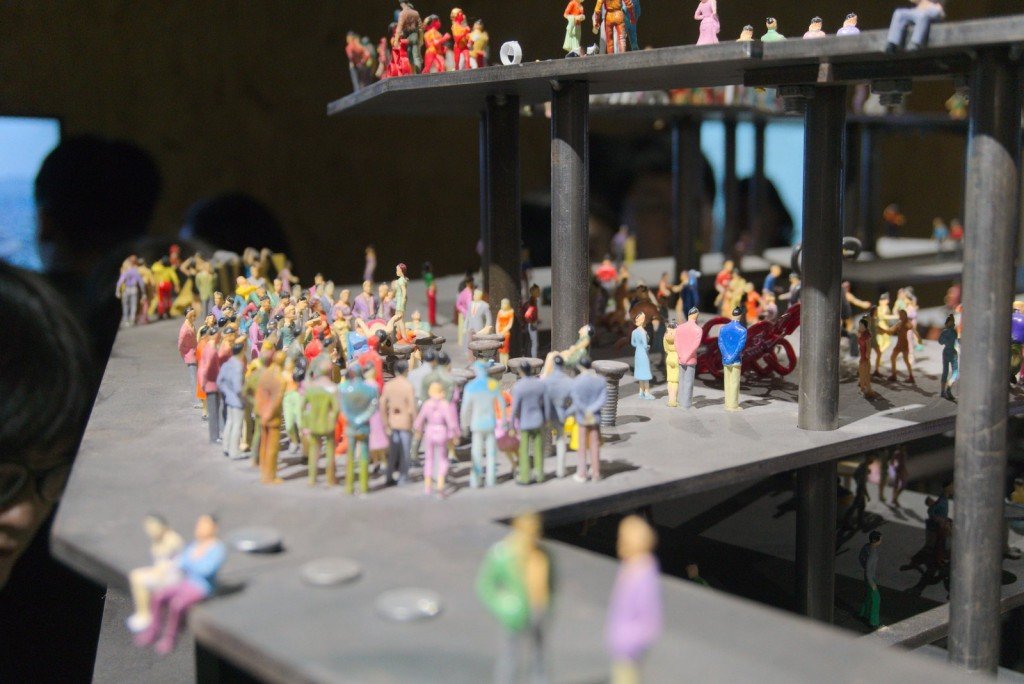
Mūsų Laboratorijos dalyvavimas šioje Urbanizmo ir architektūros bienalėje tapo įmanomas Lietuvos kultūros atašė Kinijoje ir Pietų Korėjoje Agnės Biliūnaitės bei Vilniaus savivaldybės, iš kurios gavome grantą parodai parengti, dėka.
Related links:
• Apie bienalę: en.szhkbiennale
• Apie bienalės atidarymą (pranešimas spaudai): Archdaily
• Apie didelio mastelio kūrinius sukurtus specialiai šiai bienalei: Wallpaper
• MVRDV apie bienalę ir savo kūrinį.
• Apie atelier BOW WOW.



O jei dar “Šanchajų” Šanchajuje būtumėt pristatę, išviso būtų buvę smagu :D
[…] residents and with a support of ECF in 2015: Video of the workshops. • Šnipiškės presented at Shenzhen Biennale of Urbanism and Architecture, at the main venue: Urban […]
Palik komentarą! |Leave your response!
Burbuliatorius flickr group
Donate :)
Co-Urbanism: Citizen Participation
Co-urbanism: bendradarbiavimo jungtys mieste - serija kasmetinių renginių, skirta sąveikų tarp skirtingų interesų grupių ir institucijų paieškai, siekiant kartu vystyti bendruomeniškas miesto erdves. Rengiama nuo 2o14 kartu su Minsko urbanistine laboratorija. Kuratorė Lietuvoje: dr. Jekaterina Lavrinec.
Laimikis Networks
• Starting from 2o16: Culturability (Culture + Sustainability), platforms that brings together culture actors from the Baltic Sea Region. Ongoing.
• Starting from 2o14: the Baltic House platform, hosted by Nadbałtyckie Centrum Kultury w Gdańsku / The Baltic House Lab (Gdansk, Poland).
Our Partners / Clients / Services
• Kaunas 2022, ECoC: Kaunas Beast game (opening and following events);
• Kaunas 2022, ECoC: community programme workshops for the communities leaders from Kaunas and Kaunas region neighbourhoods (2019-2020);
• Goethe-Institut Litauen: workshops in mapping the cultural potential at Šalčininkai, Jašiūnai, Tauragė, Marijampolė (2019-2021);
• Engage Liverpool: Urbingo game for Liverpool (2018);
• Cartierul Creativ Carolina: Urbingo Centenar game for Alba Iulia (2017);
• Stirling municipality: Web0 communication platform for Stirling and navigation for the city center at “Urban Ideas Bakery” (2010);
ECF Research & Development Grant
Interreg: Baltic Sea Region / Nordic Council of Ministers
• 2019 Jan – 2021 Dec: Urban Cultural Planning (Cultural Planning as a method for urban social innovation). As asociate partners, we cooperate with Vilnius TECH, Faculty of Creative Industries and contribute to the development of the urban games and routes that focuse on the green potential of the courtyards in the post-soviet districts. Also, we start developing methodology for non-formal education in cultural planning.
• 2017 Sept – 2018 Aug: BSR Cultural Planning: “Cultural Planning as a BSR Tool for co-creating collaboration and innovation among citizens and between citizens and authorities, on inclusive sustainable development of city space” (Seed Project). Laimikis conducts participatory research at Visaginas on maping local cultural potential and builds the interconnections between the cultural organizations in Visaginas and with the cultural organisations in BSR.
• 2018 – Nordic Council of Ministers has enabled us to develop a design-based tool for participatory urban research and cooperative development of the visual identity of the place, based on studies of Visaginas. As a set of methods it can be universally applied for studying the visual identity of the places.
Grundtvig / Erasmus+ partnership projects:
• 2o13-2o15: "Inside Views - Fieldwork Methods of Social Anthropology to Promote Civic, Cultural and Intercultural Education". A training session for cultural adn social actors was arranged in Castelo de Vide.
• 2o11-2o13: "InterContexts - Contributions of Civic and Cultural Education in Disadvantaged Local Contexts". Local project: developed a set of communication tools designed for the strengthening of participation in the neighbourhoods [see here]. A short guidebook "Community and neighbourhood development: Informal Communication tools and cases" is published in collaboration with the partners. Recognized as a star project [European shared treasure].
Baltic Audience Links
Gatvės Laimikis | Vilnius street people
Portraits and talks with passers-by (since 2oo7)
Praeiviai: pokalbiai ir portretai (nuo 2oo7).
Follow the white rabbit:
Events [lt/eng]
• 2o18, March 22-24, Espoo/Helsinki: Nordic Urban Laboratory. Jekaterina runs a workshop in urban games.
• 2o18, Feb 15 - Riga, Culturability meeting on Cultural Planning (Poland-Germany-Denmark-Finland-Lithuania-Latvia-Norway).
• 2o18, Jan 28 - Feb 3 - London, Manchester, Belfast: UK study tour "Arts and social inclusion", British Council.
• 2o17, Dec - Jekaterina Lavrinec is awarded with Vilnius Bee sign for the works for Vilnius and its communities. Public award.
• 2o17, Dec 8-17 - Shenzhen (China), Bi-city Biennale for Urbanism and Architecture. Laimikis.lt presents an exhebition "Urban patchwork", devoted to the wooden Šnipiškės.
• 2o17, Dec - Riga, Culturability meeting on Cultural Planning (Poland-Germany-Denmark-Finland-Lithuania-Latvia-Norway)
• 2o17, Sept 17 - School of Citizen Artist at Šančiai Library, Kaunas;
• 2o17, July 5 - 13 / August 29 - Septmeber 2: Urbingo game for Liverpool. Hosted by Engage Liverpool;
• 2o17, June : Culturability: cultural planning & games seminar;
• 2o17, June 8-9: Reaktor: cultural planning workshop, Visaginas;
• 2o17, May 25-28: TEH83: Sharing Communities, ROJC, Pula, Croatia;
• 2o17, May 20-21: Coordinate System, the Urban Art Platform of Eastern Europe, Forum, Berlin;
• 2o17, May 17-20: Baltic Audience Links - "Urban Participation" Seminar & Workshop, hosted by the Baltic Sea Cultural Center, Gdansk;
• 2o17, April 7-8: Co-urbanism, hosted by Laimikis.lt, Vilnius;
• 2o17, March 8-11: CitizensLab meeting in Brussels;
• 2o17, March 1-3: Culturability working group on Cultural planning at Pori, Finland.
• 2o17, Feb 21-23: Conference Audience Links Xchange. J. Lavrinec as a key speaker: presenting the research on Baltic Audience Links. The moderator of the Baltic NGOs session.
• 2o17, Jan 17-22: Urbingo workshop for Cartierul Creativ Carolina, Alba Iulia, Romania (CitizensLab).
• 2o16, Oct 26: Forum "Culture and Sustainable Development", paper: Creativity and social innovation for community development (Jekaterina Lavrinec).
• 2o16, Sept 24-27: Spatial Development Forum, Xtreme Urbanism. St. Petersburg, Russia. Crash-course in DIY urban culture and pannel for the Baltic DIY culture, dr. J. Lavrinec (Laimikis.lt) as one of key-speakers.
• 2o16, June 23-26: Citizens Lab: 12 European cities, 36 neighbourhoods. MitOst e.V., Berlin.
• 2o16, June 16-17: Policy Area Culture, Warsaw
• 2o16, June 10-11: Baltic Sea NGO Forum, Gdansk. Key speaker for the topic "Meaning of the culture for the cooperative urban development".
• 2o16, May 27-30: City Makers Summit, Amsterdam. Laimikis.lt is a City Embassy for Vilnius:)
• 2o16, April: Culturability meeting, hosted by Ars Baltica, Rendsburg.
• 2o16, March 30: "Vietos kultūra". Pranešimas: Bendruomeninės kūrybinės iniciatyvos kaip vietovės gaivinimo įrankis. Utena.
• 2o16, March 18: UNESCO: Kultūrų raiškos įvairovė – darnesnės visuomenės link | Diversity of Cultural Expressions, speaker. Vilnius.Convention | Press.
• 2o16, Feb 4-5: City Makers Pre-summit, at De Zwijger, Amsterdam: video. • 2o15, Sept: Interdisciplinary exhibition "City close to the water". Object "Komoda nr 3". The Baltic House Lab exhibition. Gdansk, Poland.
• 2o14, Nov 23-25: the Baltic networks meeting: the Baltic House program. Gdansk, Poland.
• 2o14, Nov 7-8: InsideViews meeting (Life Long Learning Programme) in Liege, Belgium.
• 2o14, Nov 2-3: Caucasus Cultural Initiatives Network's event and conference "Community Art as an Impulse for Intercultural Dialog", Speaker. Tbilisi, Georgia.
• 2o14, Oct 28-29: Baltic urbanists network meeting at Riga (@Goethe-Institut Riga & Urban Institute Riga). Participantion in the round table.
• 2o14, Oct 27: Public discussion "Vilnius: a Public Space?" with the architect R. Palekas, urban anthropologist J. Lavrinec, and Vilnius mayor A. Zuokas at "Inconvenient Films Festival" (Nepatogus kinas), Vilnius.
• 2o14, Oct 23-25: Idea Camp 2014, European Cultural Foundation, Marseille.
• 2o14, Sept 10-15: Contemporary art festival "Survival Kit", Riga. Urban furniture workshop by Jekaterina Lavrinec at Liksnas 26, symposium "Urban Utopia: Art and Culture as a Tool for Exploring and Researching a City" (Latvian Center for Contemporary Art | Urban Institute, Riga) & round table on the Otherness (Fargfabriken).
• 2o14, July 25-27: Summer school "Creative and social practices in public space", St.Petersburg. Tutorship.
• 2o14, June 20-21: Hosting an international Grundtvig partnership seminar-workshop "Participatory and Arts-based Research Approaches: the engaging tactics of collecting and communicating ethnographic data", Vilnius.
• 2o14, June 13-20: Public lecture & training session for the participants of the Kaukas summer school "Reanimation of public space", Kaunas.
• 2o14, April 17-18: A training session and consultancy for regional active citizens groups, NVO's, municipality and elderate workers "Regeneration of public spaces: urban design principles and cases", Utena district. LT: Viešųjų erdvių tvarkymo planavimas: dizaino principų taikymas ir geroji patirtis, Utenos raj., Utenos regiono vietos veiklos grupė.
• 2o14, Feb 21-March 8: Laimikis.lt takes part in running a winter school in Critical Mapping, curating workshops, which focuses on the wooden Šnipiškės.
• 2o14, Jan 28-Feb 2: Visiting InsideViews partners in Paris. Host:
• 2o13 Nov 24-28: Visit to Fargfabriken, Stockholm. The Baltic meeting on art tactics, promoting citizen participation.
• 2o13 Nov 7-8: Presenters at "Social Entrepreneurship for Liveable Cities" Forum, Riga, Latvia
• Starting from Oct 27: Street blogging session by and in Coffee Inn at Pilies str., Vilnius
• 2o13 Oct 26: "Contemporary Diaries": presentations on Street Blog and Cabinets of Curiosities (Cinema Book workshop)
• 2o13 Oct 2-4: Strategies of preserving the old and creating the new in the urban spaces: Cases of the Baltic region Countries (New Urban Topologies, the Center of Contemporary Art and Urbanism Fargfabriken & TOK), Saint Petersburg, Russia
• 2o13 May-October: Street Mosaic workshop, Guided tours, Developing alternative playground, Neighbours' meetings in the wooden neighbourhood of Šnipiškės.
• 2o13 June-August: public debates on the reconstruction of public spaces (Lukiškės sq.) in Vilnius and citizen participation on radio & in press. Micro-protest action.
• 2o13, June 12: Colloquium Vilnense session V: Civil Society? Public Spaces of Memory: presentation "Building Community Spaces in Šnipiškės neighborhood".
• 2o13, May 17-20: Inter-Context meeting in Riga. Laimikis team presented a work in progress in Šnipiškės neighbourhood.
• 2o13, May 3-5: "Išeik į aikštę" (Come to the square!) festival at Cathedral sq., Vilnius.
• 2o13, April 24-28: Laimikis team visits their colleagues in Berlin and explores community gardens initiatives.
• 2o13, Jan 23 - Feb 2: Laimikis team visits their Portuguese colleagues (ICE), who develop a regional project, focused on actualization of historical memory and cultural heritage. Castelo de Vide school, Instituto Politécnico de Portalegre, Ferreira do Alentejo municipality and several museums and galleries around the region are involved.
Recent Comments
also we:
channels
Urban ideas:
City DNR: Alternative city mapping
structures and movements by Lu Xinjian.
Blogroll